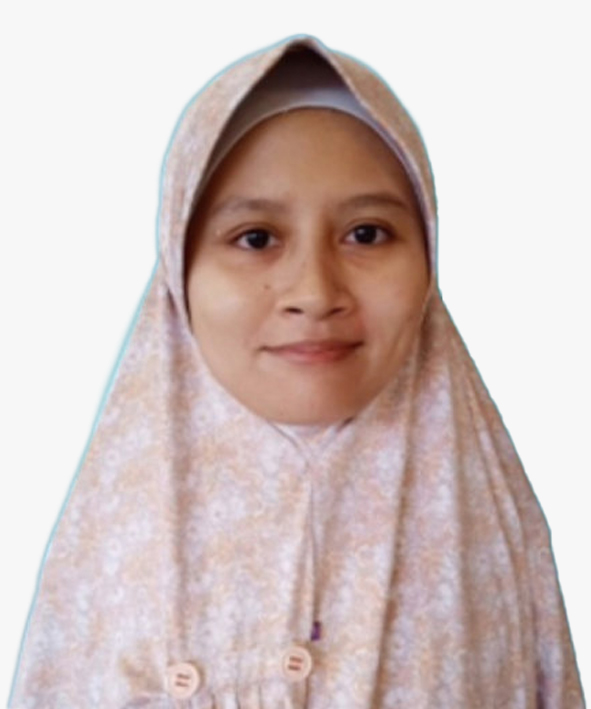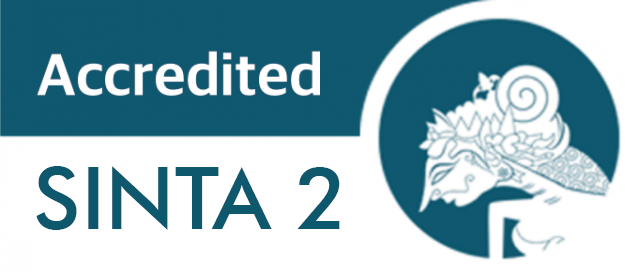Helping Special Needs Children to Make Friends
Introduction: Children with special needs are often considered to be cursed. They are frequently ostracized from society thus making them feel lonely. This paper aims to help patients, especially children with special needs, find good friends through the review of current studies. Methods: This study used a descriptive quantitative method and data that was retrieved from Child and Adolescence Psychiatric Outpatients Daycare, Dr. Soetomo General Academic Hospital, Surabaya with 80 children with ADHD and 160 children with ASD. Results: A common intervention used in Indonesia is applied behavior analysis (ABA), a method that trains children to have social skills such as how to communicate, interact, and express themselves in social settings. Besides personal intervention, the need for integrated care for children with special needs such as pharmacological therapy, speech and behavioral therapy, occupational therapy, and special education, is needed to support them in helping them make friends. Conclusion: To help children with special needs make friends, we can give support, appreciation, and motivation. However, children with special needs need different treatment from their peers, so special attention and understanding are needed so that children with special needs can socialize and make friends well.
Keywords: Children, Special Needs, Friends, Mental Health, Loneliness
INTRODUCTION
Children with special needs are children who experience limitations or abnormalities, both physical, mental-intellectual, social, and emotional, which have a significant effect on the growth or development process compared to other children of the same age. This causes children with special needs to require special treatment. Children who have physical limitations do not necessarily have intellectual, emotional, and social limitations. Children with special needs generally differ from normal children of the same age.
Based on a report from the statistical data of the Coordinating Ministry for Human Development and Culture in June 2022, disability in children aged 5-19 years is 3.3%. The population of this age group (in 2021) is 66.6 million which means 2,197,833 people are children with disabilities with an age range between 5-19 years. Data from Child and Adolescence Psychiatric Outpatient Daycare, Dr. Soetomo General Academic Hospital, Surabaya from March to June 2023 showed that the incidence of children with ADHD was 53,6% and children with ASD was 83% children[1].
In general, children with special needs have several obstacles in carrying out their daily activities and socializing with others. This sometimes becomes difficult for children with special needs to socialize and build relationships with others. This has an impact on making children with special needs experience difficulties in social matters such as making friends with children their age and can also hinder the learning process in children with special needs such as at school. However, following the 1945 Constitution of The Republic of Indonesia Article 32 Paragraph (1) which stated that "every citizen has the right to education", all citizens have the right to enjoy education, as well as children with special needs. This is reaffirmed in Law No. 23 of 2002 concerning Child Protection, Article 51 which stated that "children with physical or mental disabilities are given equal opportunities and accessibility to obtain ordinary and extraordinary education"[2].
Peers are the first social environment where children learn to live with others who are not family members. The peer environment is an interaction between people with similar age and status. There is a correlational relationship between personality and socialization, located in the process of personality formation through socialization. This means that human personality will be formed through social relationships and depend on the habits applied in his environment. Therefore, the influence of peers is important in determining the ability to socialize children with disabilities in inclusive schools. The age period of 6-12 years is the stage of social development of elementary school children, the typical trait they have at this time is that they like to form peer groups, usually to play together. The age of 6-12 years is the initial period of children in elementary school where they will like to play individually and with groups. This is a form of children's sensitivity to the surrounding environment, namely peers who are enjoying the play period at the beginning of school. Unconsciously, this condition has built a barrier for children with special needs in the process of socializing with other normal children.
Following the description above, children with special needs require special treatment, but in the process of developing and learning, children with special needs also need a friendship environment that can provide support and help them develop both mentally and physically. The formation of friendship groups as a place to hone social skills is needed by every child, including children with special needs. Some examples of children with special needs are children with Autism, Attention Deficit Hyperactivity Disorder (ADHD), and behavioral disorders. Some parents of children with special needs sometimes unconsciously withdraw their children from society for various reasons, including a lack of confidence that their children can interact well. In fact, with the rise of inclusive schools, many parents whose children do not have special needs realize that interacting with children with special needs also adds value to their children.
Based on temporary observations at the Child and Adolescence Psychiatric Outpatient Daycare with children with special needs, the learning method and process are adjusted to the child’s ability to receive lessons. Based on this background, the author is interested in writing a more in-depth paper entitled "Helping Special Needs Children to Make Friends".
REVIEW
Special Needs Children
Children with special needs are children who require special handling due to developmental disorders and abnormalities experienced by children. Children with special needs have differences that occur in several ways, such as the process of growth and development that experience abnormalities or deviations physically, mentally, intellectually, socially, and emotionally. In the context of special education in Indonesia, children with special needs are categorized in terms of blind children, deaf children, children with intellectual disabilities, children with motor disabilities, children with social-emotional disorders, and children with smart and special talents. Each child with special needs has different characteristics from one to another. In addition, each child with special needs also requires special services tailored to their abilities and characteristics. It is important to carry out identification and assessment activities to identify their characteristics and needs. This is considered important to get the right services according to their characteristics, needs, and abilities.
Children with special needs have the same rights as other children and can live independently, achieving according to their interests and potential. For this reason, parents, families, and communities must be responsible for fulfilling children's rights in all aspects of life, such as socializing
Anis E. Catatan Rekap Data Day Care RSUD Dr. Soetomo Surabaya Maret-Juni 2023
Power J, Goodyear M, Maybery D, Reupert A, O’Hanlon B, Cuff R, & Perlesz A. Family resilience in families where a parent has a mental illness. Journal of Social Work. 2016; 16(1): 66–82. https://doi.org/10.1177/1468017314568081
Gresham FM & Elliott SN. Social skills improvement system rating scales. Minneapolis, MN: Pearson Assessments. 2008.
Fenwick-Smith A, Dahlberg EE, Thompson SC. Systematic review of resilience-enhancing, universal, primary school-based mental health promotion programs. BMC Psychol. 2018 Jul 5;6(1):30. doi: 10.1186/s40359-018-0242-3. PMID: 29976252; PMCID: PMC6034212. DOI: 10.1186/s40359-018-0242-3
Biran, MI & Nurhastuti. Pendidikan Anak Autisme. Kuningan: Goresan Pena. 2018.
Lord, Catherine. et al. Autism Spectrum Disorders. Department of Psychiatry The University of Chicago. Journal of Neuron. 2000;Vol. 28:355-363.
PPNI, T. P. S. D. Standar Diagnosis Keperawatan Indonesia (Tim Pokja SDKI DPP PPNI (Ed.); Edisi 1, c). Dewan Pengurus Pusat Persatuan Perawatan. 2017.
Anisah AS. Gangguan prilaku pada anak dan implikasinya terhadap perkembangan anak usia sekolah dasar. JPsd (Jurnal Pendidikan Sekolah Dasar). 2015; 1(2), 5-20.
DOI: http://dx.doi.org/10.30870/jpsd.v1i2.689
Mohan L, Yilanli M, Ray S. Conduct Disorder. 2023. In: StatPearls [Internet]. Treasure Island (FL). https://www.ncbi.nlm.nih.gov/books/NBK470238/.
Committee on the Health and Medical Dimensions of Social Isolation and Loneliness in Older Adults, Board on Health Sciences Policy, Board on Behavioral, Cognitive, and Sensory Sciences, Health and Medicine Division, Division of Behavioral and Social Sciences and Education, & National Academies of Sciences, Engineering, and Medicine. 2020. Social Isolation and Loneliness in Older Adults: Opportunities for the Health Care System, 25663. National Academies Press. https://doi.org/10.17226/25663
Undang-Undang Nomor 23 tahun 2002 tentang Perlindungan Anak
Mazurek MO. Loneliness, friendship, and well-being in adults with autism spectrum disorders. Autism. 2014;18(3), 223-232. DOI: 10.1177/1362361312474121
Durkin, K., & Conti‐Ramsden, G. Language, social behavior, and the quality of friendships in adolescents with and without a history of specific language impairment. Child development. 2007;78(5), 1441-1457. DOI: 10.1111/j.1467-8624.2007.01076.x
Heydari M, Xiaohu Z, Saeidi M, et al. Analysis of the role of social support-cognitive psychology and emotional process approach. European Journal of Translational Myology. 2020; 30(3). DOI: 10.4081/ejtm.2020.8975
Deputi Bidang Perlindungan Anak. Buku Saku Anak Berkebutuhan Khusus, Jakarta: Kementerian Pemberdayaan Perempuan dan Perlindungan Anak Republik Indonesia. 2012.
Bukowski WM, Hoza B, Boivin M. Measuring friendship quality during pre-and early adolescence: The development and psychometric properties of the Friendship Qualities Scale. Journal of Social and Personal Relationships. 1994;11(3), 471-484. DOI: 10.1177/0265407594113011
Blaxk MH, Kizminski R, Wang J, et al. Experiences of Friendship for Individuals on the Autism Spectrum: A Scoping Review. Rev J Autism Dev Disord. 2022. https://doi.org/10.1007//s40489-022-00332-8
McConnell, S. R. (2002). Interventions to facilitate social interaction for young children with autism: Review of available research and recommendations for educational intervention and future research. Journal of autism and developmental disorders, 32, 351-372. OI: 10.1023/a:1020537805154
Bottema-Beutel, K. (2017). Glimpses into the blind spot: Social interaction and autism. Journal of communication disorders, 68, 24-34. DOI: 10.1016/j.jcomdis.2017.06.008
Watkins, L., O’Reilly, M., Kuhn, M., Gevarter, C., Lancioni, G. E., Sigafoos, J., & Lang, R. (2015). A review of peer-mediated social interaction interventions for students with autism in inclusive settings. Journal of autism and developmental disorders, 45, 1070-1083. DOI: 10.1007/s10803-014-2264-x
Copyright (c) 2024 Anis Ernawati

This work is licensed under a Creative Commons Attribution-ShareAlike 4.0 International License.
1. Copyright of this journal is possession of the Author, by the knowledge of the Editorial Board and Journal Manager, while the moral right of the publication belongs to the author.
2. The journal allows the author(s) to retain publishing rights without restrictions.
3. The articles are published under a Creative Commons Attribution Share-Alike (CC BY-SA) license. Many research funding bodies prefer the CC BY-SA license because it allows for maximum dissemination and re-use of open access materials. Users are free to share (copy, distribute, and transmit) and remix (adapt) the contribution under this license, including for commercial purposes, as long as they attribute the contribution in the manner specified by the author or licensor.




























